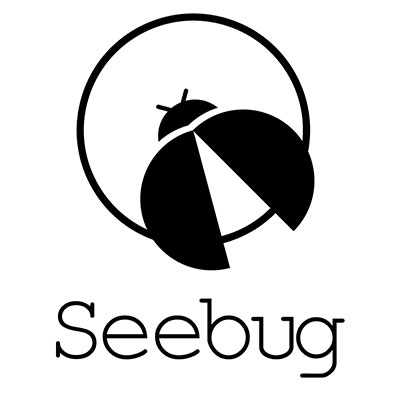# ICS Advisory (ICSA-18-324-01)
## Teledyne DALSA Sherlock
Original release date: November 20, 2018
[Print Document](javascript:window.print\(\);)
[Tweet](https://twitter.com/share?url=https%3A%2F%2Fus-
cert.cisa.gov%2Fics%2Fadvisories%2FICSA-18-324-01)
[Like Me](https://www.facebook.com/sharer.php?u=https%3A%2F%2Fus-
cert.cisa.gov%2Fics%2Fadvisories%2FICSA-18-324-01)
[Share](http://www.addthis.com/bookmark.php?url=https%3A%2F%2Fus-
cert.cisa.gov%2Fics%2Fadvisories%2FICSA-18-324-01)
### Legal Notice
All information products included in [https://us-cert.gov/ics](/ics) are
provided "as is" for informational purposes only. The Department of Homeland
Security (DHS) does not provide any warranties of any kind regarding any
information contained within. DHS does not endorse any commercial product or
service, referenced in this product or otherwise. Further dissemination of
this product is governed by the Traffic Light Protocol (TLP) marking in the
header. For more information about TLP, see [https://www.us-
cert.gov/tlp/](/tlp/).
* * *
## 1\. EXECUTIVE SUMMARY
* **CVSS v3 7.3**
* **ATTENTION:** Low skill level to exploit
* **Vendor:** Teledyne DALSA
* **Equipment:** Sherlock
* **Vulnerability:** Stack-based Buffer Overflow
## 2\. RISK EVALUATION
Successful exploitation of this vulnerability could crash the device being
accessed; a buffer overflow condition may allow remote code execution.
## 3\. TECHNICAL DETAILS
### 3.1 AFFECTED PRODUCTS
The following versions of Sherlock, a machine vision software interface, are
affected:
* Sherlock Version 7.2.7.4 and prior.
### 3.2 VULNERABILITY OVERVIEW
**3.2.1 [STACK-BASED BUFFER OVERFLOW
CWE-121](https://cwe.mitre.org/data/definitions/121.html)**
A stack-based buffer overflow vulnerability has been identified, which may
allow remote code execution.
[CVE-2018-17930](http://web.nvd.nist.gov/view/vuln/detail?vulnId=CVE-2018-17930)
has been assigned to this vulnerability. A CVSS v3 base score of 7.3 has been
calculated; the CVSS vector string is
([AV:L/AC:L/PR:L/UI:R/S:U/C:H/I:H/A:H](https://www.first.org/cvss/calculator/3.0#CVSS:3.0/AV:L/AC:L/PR:L/UI:R/S:U/C:H/I:H/A:H)).
### 3.3 BACKGROUND
* **CRITICAL INFRASTRUCTURE SECTORS:** Critical Manufacturing
* **COUNTRIES/AREAS DEPLOYED:** Worldwide
* **COMPANY HEADQUARTERS LOCATION:** Canada
### 3.4 RESEARCHER
Robert Hawes reported this vulnerability to NCCIC.
## 4\. MITIGATIONS
Teledyne DALSA recommends users upgrade to Sherlock Version 7.2.7.5 or later.
The latest update can be obtained from the following link:
<https://www.teledynedalsa.com/en/products/imaging/vision-software/sherlock/>
NCCIC recommends that users take the following measures to protect themselves
from social engineering attacks:
* Do not click web links or open unsolicited attachments in email messages.
* Refer to [Recognizing and Avoiding Email Scams](/reading_room/emailscams_0905.pdf) for more information on avoiding email scams.
* Refer to [Avoiding Social Engineering and Phishing Attacks](/cas/tips/ST04-014.html) for more information on social engineering attacks.
NCCIC reminds organizations to perform proper impact analysis and risk
assessment prior to deploying defensive measures.
NCCIC also provides a section for [control systems security recommended
practices](/ics/content/recommended-practices) on the ICS-CERT web page.
Several recommended practices are available for reading and download,
including [Improving Industrial Control Systems Cybersecurity with Defense-in-
Depth Strategies](/sites/default/files/recommended_practices/NCCIC_ICS-
CERT_Defense_in_Depth_2016_S508C.pdf).
Additional mitigation guidance and recommended practices are publicly
available on the [ICS-CERT website](/ics/) in the Technical Information Paper,
[ICS-TIP-12-146-01B--Targeted Cyber Intrusion Detection and Mitigation
Strategies](/ics/tips/ICS-TIP-12-146-01B).
Organizations observing any suspected malicious activity should follow their
established internal procedures and report their findings to NCCIC for
tracking and correlation against other incidents.
No known public exploits specifically target this vulnerability. This
vulnerability is not exploitable remotely.


暂无评论